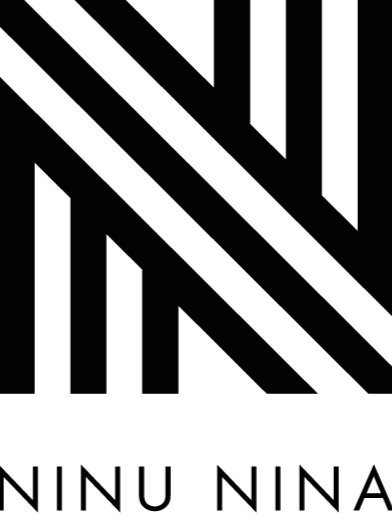Sonic Alchemy: An Interview with Shcaa
Shcaa, a Paris based composer and guitarist, whose work is a vibrant tapestry of blues, electronic minimalism, and cinematic storytelling, invites us on an immersive journey through sound—a journey where each note is an exploration of the natural world, human emotion, and the infinite possibilities of creative expression.
Shcaa's music defies simple categorization. His post-modernist sonic identity is born from a deep-rooted connection to diverse cultural and musical traditions. Whether he’s unraveling the soulful strains of the blues or channeling the precision of electronic minimalism, he consistently weaves a narrative that is both deeply personal and universally resonant. His work is an ever-evolving conversation between the instinctual and the intellectual—a dialogue that speaks to the heart of what it means to be human in these uncertain times.
At the core of his creative practice is the belief that music has the power to transform, transcend, and heal. His live performances, marked by expansive improvisation and digital manipulation, are an invitation to lose oneself in a realm where sound is fluid, emotions are palpable, and every performance is a unique exploration. Using his guitar as both a traditional instrument and a tool for digital innovation, Shcaa re-explores vast libraries of sonic material, releasing them in a dynamic, seven-minute journey that ebbs and flows like a living organism. His production style—characterized by saturated guitar tones, spiraling dub echoes, warbling keys, and oscillating percussion—creates soundscapes that not only resonate with the listener but also spark a deeper introspection about our place in the world.
But Shcaa isn’t just a composer, he’s a multidimensional artist. Beyond his mesmerizing ambient compositions and film scores, he expresses his creative vision through visual art. For the past nine years, he has crafted all of his own album covers, meticulously collecting photographs during his travels and night walks. These images are layered and superimposed to create intricate patterns and symbolism, a testament to his belief in the interconnectedness of all art forms. “I don’t consider myself a visual artist per se,” he explains, “but creating my own covers has become an essential part of my practice. It’s like speaking a secret language that merges sound and vision.” Shcaa’s ambition even extends to drawing, a new frontier he is eager to explore as part of his ongoing artistic evolution.
When asked whether artists have a responsibility to be activists, Shcaa offers a nuanced perspective. He acknowledges that art is one of the most profoundly human endeavors—it can serve as a form of salvation, a means to raise awareness, and a way to provide solace in dark times. Yet, he cautions against over-politicizing art; for him, the most authentic message comes from the personal, the emotional, and the intimate. It is in these raw, unfiltered moments that true power—and the drive for change—resides.
Shcaa’s journey in music began in his final year of high school in Tunisia, where the rhythms of 60s rock and the intricate beats of British IDM filled his days. From those early experiences, his passion for sound has only grown, developing into a career that spans continents, genres, and cultures.
Q: Your greatest inspirations or influences?
My main inspiration is nature—its beauty and its mysteries. When it comes to man made artworks, my influences evolve constantly. Some names that come to mind right now: Paul Motian, for his compositions—simple yet deeply moving melodies. Miles Davis in the second half of the sixties. The Velvet Underground, Harold Budd, Loren Connors. I’ve been really impressed recently by Eli Keszler’s albums. Autechre’s early digital works. Terry Riley’s just intonation jams. Sam Gendel.
Also: Joseph Conrad, Bi Gan, R. Murray Schafer, Herman Hesse, Henri Matisse, W.G. Sebald, Francisco de Goya.
Q: How is the current world around you part of your artistic process?
The people closest to me have a great influence—they are my world, and they shape the colours of my music, both joyful and melancholic. In the end, it becomes very poetic and abstract, but this emotional depth is what moves me the most.
I never feel directly affected by the « outside » world but it certainly feeds into my subconscious.
Q: Tell us about your creative process—from the moment you explore an idea to it being ready.
Often, an idea stays with me for a long time—like a scene from a film. I’m currently working on my next album, which began 3–4 years ago. The songs first emerged on the guitar and lived in my head for quite a while. I then began improvising freely, building textural soundscapes and rhythms, which gradually merged with those original guitar ideas. The tracks are typically composed of several layers of improvisation.
Once I reach the deeper stages of production and arrangement, it becomes a long and meticulous process. That said, I’ve recently welcomed more purely improvisational work—I feel a part of my practice may evolve toward a more spontaneous expression, leaving behind some of the more painstakingly arranged aspects.
Q: Do you feel artists have a responsibility to be activists for a better world?
This is a complex question, and I don’t believe there’s a simple answer. As I mentioned before, art can be deeply meaningful. I actually believe it might be one of the most profoundly “human” things we can do.
The world we live in is often dark and unjust, and that inevitably feeds into creative work. Art can be a form of salvation—it can provide escape, raise awareness, and help people feel what others feel. But sometimes, giving to much importance to the political message of a work can reduce its meaning. The personal side is the most interesting part of an art piece, this is the truest and most unique message an artist can share.


